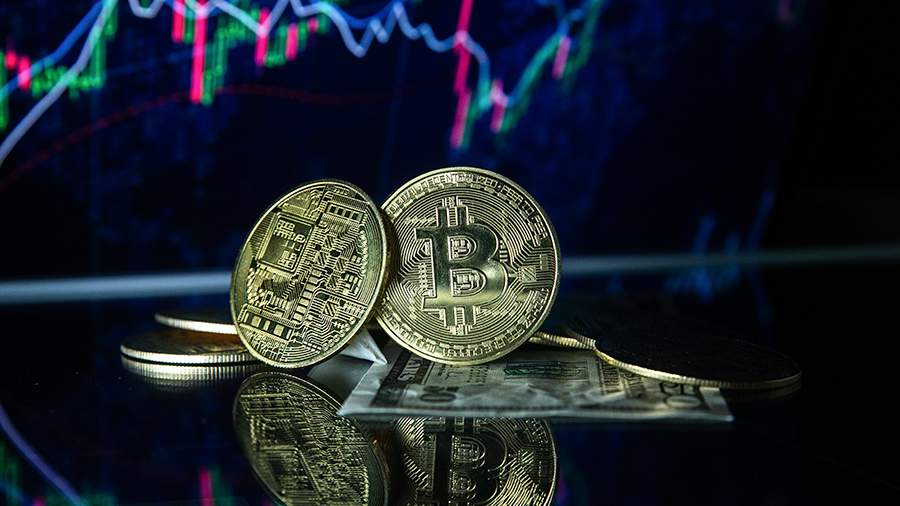The expert warned about fraud against the background of the unstable exchange rate of cryptocurrencies
- Новости
- Economy
- The expert warned about fraud against the background of the unstable exchange rate of cryptocurrencies

Sharp fluctuations in the value of bitcoin (BTC) and other cryptocurrencies contribute to the growth of fraudulent activity in the digital asset market. In the conditions of a "jumping" market, deception schemes are becoming more diverse and sophisticated, and user credulity is extremely high, said the director of communications of the cryptocurrency exchange. exmo.me Mikhail Smirnov to Izvestia on May 14.
"When the cryptocurrency market is characterized by high volatility, especially during periods of rapid growth or decline in the value of bitcoin, fraudsters use less obvious but technologically advanced schemes," he noted.
Fake websites and applications of popular exchanges and wallets remain one of the most common but evolving schemes. The peculiarity of modern phishing is its complexity: fraudsters create websites with valid SSL certificates and addresses that are visually indistinguishable from the original. Fake apps also end up in the official App Store and Google Play, which misleads even experienced users. After entering a seed phrase or key, access to assets is completely lost, the expert explained.
"During market instability, the number of "insider" groups is growing sharply, where experts promise to "rock" low-liquid tokens. The organizers of the scheme purchase a token in advance, and then massively disseminate information about the alleged imminent growth, provoking a sharp surge in interest. After reaching peak values, coins are dumped into the market, leaving investors with depreciated assets," he added.
During the fall of large tokens, investors look for income in alternative instruments and switch to DeFi. This is used by scammers, creating the appearance of decentralized applications. In fact, smart contracts remain under the full control of developers, who can "drain" the liquidity pools or change the commission parameters at any time, Smirnov said.
"Against the background of bitcoin's instability, investors' attention often turns to stablecoins. Scammers create fake tokens, allegedly linked to the dollar or another asset, and promote them through ICOs, forums or "investment advice" on social networks. Such schemes are especially dangerous because the token can mimic a well-known brand (for example, USDT with an added symbol). After collecting the liquidity, the scammers stop supporting and withdraw the funds," the expert explained.
Also, according to him, against the background of the unstable exchange rate of classical cryptocurrencies, more and more investors are paying attention to stablecoins, digital assets whose exchange rate is pegged to fiat currencies (most often to the US dollar). There are more than 200 stablecoins, but the most popular are USDT (Tether), USDC and DAI. They seem to be a safe alternative: there are no fluctuations in the exchange rate, high liquidity, and wide availability on exchanges.
However, it is precisely this apparent stability that becomes the bait for new deception schemes, the expert emphasized. Scammers often offer to purchase stablecoins at a "favorable rate" outside exchanges — through Telegram bots, "verified contacts" or in the comments under cryptoposts. You can also find "buybacks" of USDT or USDC with supposedly guaranteed profits — a scheme that actually turns out to be a pyramid scheme.
A separate area is fake wallets and smart contracts. The user receives tokens that look like USDT, but have no relation to the real asset. They cannot be transferred or exchanged. Such tokens mimic the interface of popular wallets and can mislead even experienced users.
"Before entering the data, make sure that you are using the official website of the cryptoplatform. The best way is to enter the URL manually or use bookmarks. Use hardware wallets and two-factor authentication (2FA). Don't trust "insider" information. Do not provide seed phrases, private keys and access codes, and check DeFi project contracts for audit, as well as store stablecoins only from well-known issuers," Smirnov summed up.
According to the Binance platform, the BTC exchange rate has reached $105 thousand.
Earlier, on May 12, Denis Astafyev, the founder of the SharesPro investment company, told Izvestia that the bitcoin exchange rate in 2025 could update the historical maximum and reach $ 120-130 thousand. He also added that liquidity has returned to the cryptocurrency market.
Переведено сервисом «Яндекс Переводчик»

